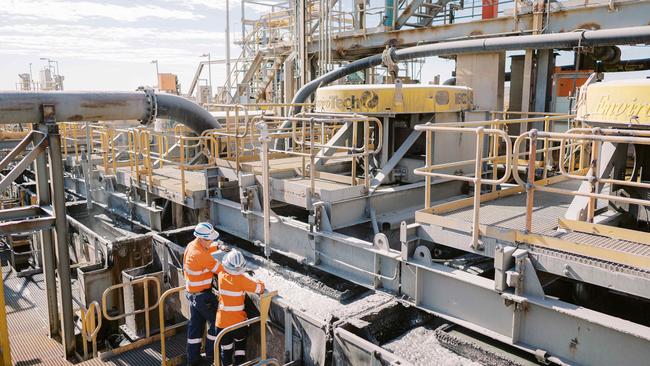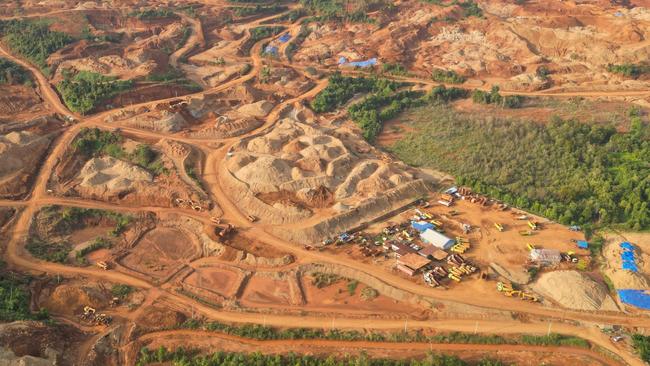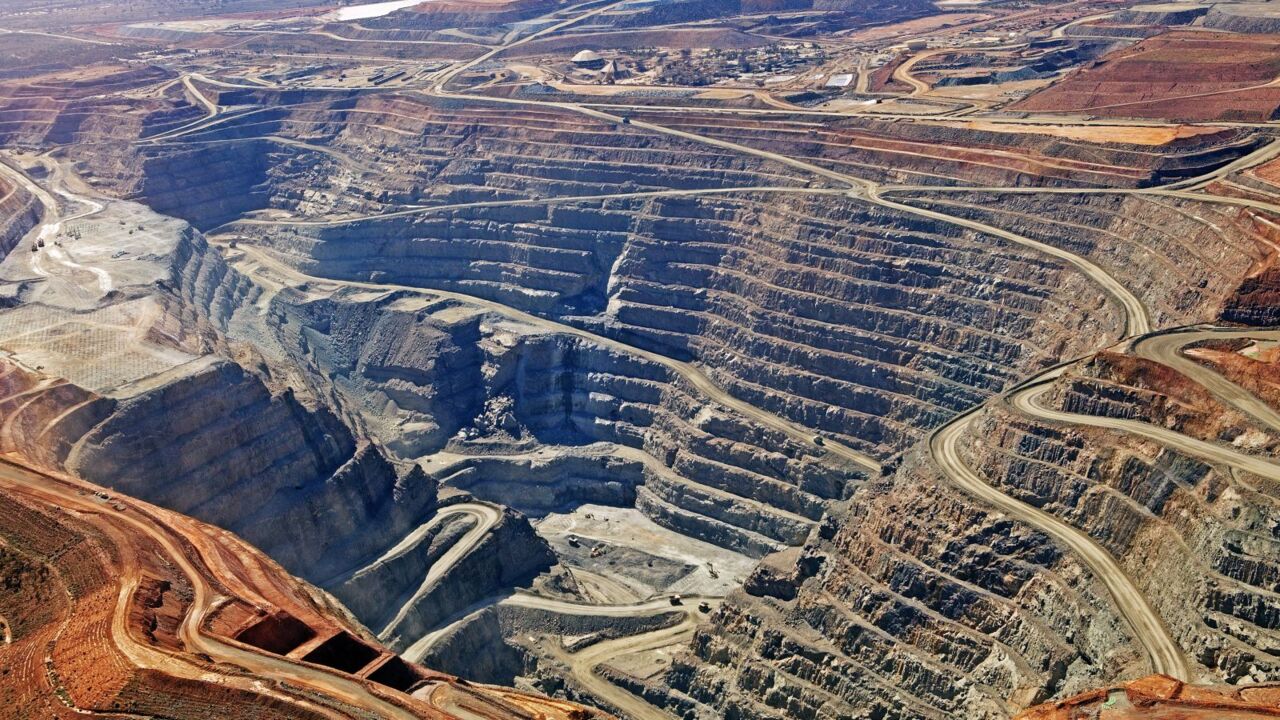Less chance of BHP, Forrest nickel mines reopening: Nickel Industries
A key competitor sees no light at the end of the tunnel for Australian producers in terms of a green premium or price recovery that could restart operations that were mothballed in 2024.

One of Indonesia’s biggest nickel producers says there is little chance of the likes of BHP and Andrew Forrest reopening shuttered Australian mines in 2025 and beyond.
Nickel Industries chief executive Justin Werner issued the warning as BHP pours millions of dollars into maintaining mines, a smelter and refinery it shut down in 2024.
Mr Werner said the Australian government had failed in a campaign to orchestrate a so-called green premium for local product that implied Indonesia produced “dirty” nickel under lax environmental standards.
He said the collapse of the Australian nickel industry in 2024 stemmed from an inability to compete with lower-cost producers in Indonesia and there was no light at the end of the tunnel in terms of a green premium or recovery in prices.
However, Mr Werner saw potential for global nickel supply to slip into deficit later this decade based on tighter controls and a drop-off in investment in Indonesia and the closure of mines in Australia and other jurisdictions.
ASX-listed Nickel Industries has a growing footprint of mines and downstream processing plants in Indonesia in partnership with Chinese billionaire Xiang Guangda, who is known as the nickel king and founded one of the world’s largest producers in Tsingshan Holdings.
Indonesia’s policy settings aimed at attracting downstream investment from China and other jurisdictions became a sore point with the Albanese government last year, as the shutdown of a string of mines, including those owned by BHP and Forrest family-owned Wyloo, led to about 7000 job losses.

“There’s been a big price reset, predominantly driven by what’s happened in Indonesia. We seem to be hovering around an LME (London Metals Exchange) price of around $US16,000 a tonne,” Mr Werner told The Australian.
“Most Australian and producers outside Indonesia need an incentive price of around $US20,000 to $US22,000 a tonne, and I don’t think we’re going back to anywhere near there for quite some time.”
Administrators FTI said this week that they had completed the sale of one the first nickel dominos to fall, Panoramic Resources, under a deal where shareholders received nothing and unsecured creditors less than 10c on the dollar.
FTI’s Daniel Woodhouse said the completing a sale had been challenging given the nickel market conditions and with significant industry players putting operations into care and maintenance.
Under the terms of the sale to Zeta Resources, until recently listed on the ASX and now owned by Bermuda-based investment company UIL Limited, outstanding employee entitlements paid in full and a big debt to commodities trader Trafigura will be restructured.
BHP intends to review what it calls the temporary suspension of its Australian nickel operations that employed about 3500 people by February 2027. In the meantime, it has pledged to spend about $US300m ($482.5m) a year on the WA-based operations to keep them ready for a restart.
Jessica Farrell, who took on the role as BHP nickel boss in late 2021 and presided over a $US300m loss in 2023-24 amid a glut in global supply, is due to start a new role of as vice president of innovation within the mining giant’s technical leadership team this month.
BHP vice president of operational decarbonisation, Daniel Heal, a former general manager of the iron ore operations at Newman, took on responsibility for the mothballed nickel assets in December.
Wyloo shutdown mines that supplied BHP last year and has scaled backed its $760m-plus investment in nickel operations around Kambalda in WA to exploration work.
Mr Werner said BHP faced a real dilemma in nickel after writing down the value of the business by $US3.5bn last February. The pre-tax impairment reduced the carrying value of the operating assets to negative $US300m, including closure and rehabilitation provisions of about $US900m.

“BHP is in a bit of a conundrum because there’s a huge rehabilitation cost if they actually decide to make the call to close the nickel operations,” Mr Werner said.
“Or do they keep spending on care and maintenance in the hope that at some point in the future it will be competitive again.”
Nickel Industries typifies the growth in the Indonesian industry, with the latest iteration of the high pressure acid leach (HPAL) technology that has helped Chinese-backed miners flood the global market.
The Sydney-based company went from producing no nickel six years ago to selling 65,000 tonnes in the six months to June 30 last year, and is expanding both its mining and processing footprint.
Mr Werner said there were some positives for Australia in Indonesia’s moratorium on any more nickel pig iron production and rising Indian demand for stainless steel.
He noted European steel makers had started buying nickel pig iron after previously branding it too dirty and that the growth in HPAL production in Indonesia might not be as great as some forecast.
“What’s really changed the game is cheap production from Indonesia HPAL plants but what’s interesting is how many more will be built,” Mr Werner said.
“There’s a lot of announcements made and a lot of MOUs, but if you actually look at what’s funded and under construction, there’s only three projects, including ours.
“In totality, that’s probably about another 200,000 tonnes that’s coming into the market, but we’ve just had 500,000 tonnes come out, and that’s from BHP, Mincor (now owned by Wyloo) from New Caledonia, from Brazil and Colombia.
“These HPAL plants cost $1bn-$2bn to build and are not easy to finance, and there’s only a limited number of team with the expertise to build them.
“The big demand driver is EV battery take up and the low nickel price actually helps that.”
Macquarie’s sales and trading team sees weaker EV sales in Europe and North America as the biggest medium-term concern for the nickel market, along with a shift towards non-nickel containing batteries.
“Our assessment of the 2024 surplus has been reduced from the start of the year due to ongoing market-related cuts in nickel production and growing losses from Indonesian production due to ore shortages,” it said in a recent note that highlighted falling ore grades and suggested Jakarta could slow the building of new HPAL capacity by ditching tax incentives.
Indonesia has already moved to improve environmental standards, and started rejecting mining permit renewals and applications for companies that haven’t complied with reporting requirements or met rehabilitation standards.
Mr Werner said there was a lot greater scrutiny now that Indonesia had moved from issuing mining permits annually to issuing three-year permits, and this had caused a squeeze in ore supply.
The Albanese government belatedly added nickel to its critical minerals list and spoke about the need to protect “sovereign capacity” as mines started to close in 2024.
It then set about lobbying on the world stage — including through US ambassador Kevin Rudd — for a green premium for Australia nickel in a campaign that put the spotlight on the environmental damage caused by nickel mining and processing in Indonesia.
Mr Rudd blasted the Chinese-owned LME after it rejected Australia’s bid to have it recognise nickel produced under high ESG standards in its pricing, saying there had not been a sufficient or intelligent response from the LME because of its own interests.
Mr Werner said the green premium was a red herring based on inflated claims about the ESG qualities of Australian nickel sulphide players compared with nickel laterite producers in Indonesia.
“The LME did some exploratory work on it and there was just absolutely no interest,” he said.
“You’ve got electric vehicle makers that are loss making and struggling. They’re trying to get raw materials at the best price they can, and that’s what they’ll do as long as the raw materials meet their basic environmental standards.
“This whole claim that Australian nickel is much greener than what’s coming out of Indonesia is all just a bit of a fallacy,” he added.
“The other problem is: who is going to govern what product should attract a green premium? Who’s going to come up with the criteria and say who qualifies and who doesn’t?”



To join the conversation, please log in. Don't have an account? Register
Join the conversation, you are commenting as Logout